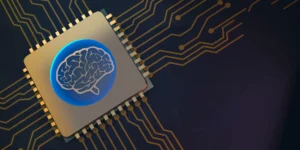
In a groundbreaking scientific achievement, researchers have created the first living programmable organism—a microscopic biological machine that’s neither a traditional robot nor a naturally occurring organism. Known as Xenobots, these remarkable creations are made from living frog cells and were designed entirely using computer algorithms. With the potential to revolutionize medicine, environmental cleanup, and even our understanding of life itself, Xenobots mark a thrilling step into uncharted territory.
What Is a Living Programmable Organism?
The term living programmable organism might sound like science fiction, but it’s now science fact. These entities are built from stem cells sourced from the African clawed frog (Xenopus laevis), and arranged in specific shapes and functions dictated by computer-generated blueprints.
What makes them different from any previous biological structure is that they are programmed—not with code in the digital sense, but through physical design. Their structure determines how they behave. For instance, some Xenobots are shaped to swim, others to push objects, and some even to carry miniature payloads.
Researchers at the University of Vermont and Tufts University were the first to design and build these living machines. The project was supported in part by the Defense Advanced Research Projects Agency (DARPA), which often funds cutting-edge biotechnological research.
How These Tiny Biological Robots Are Created
Creating a living programmable organism begins with a simulation. Scientists use a type of artificial intelligence called an evolutionary algorithm to generate thousands of possible configurations. The system selects the designs that best perform a desired task—like walking or swimming.
Once the design is chosen, stem cells are extracted from frog embryos. These cells are then painstakingly sculpted under a microscope, using microsurgical tools to shape them into the configurations developed by the computer.
The result? A living organism that behaves in ways never seen in nature—because it was never meant to exist naturally. These Xenobots can move independently, work cooperatively, and even self-heal when damaged.
You can learn more about AI-driven simulations in biotechnology by visiting MIT Technology Review.
Living Programmable Organism – Why It Matters
The implications of creating a programmable life form are enormous, and the living programmable organism represents a key turning point in both biology and robotics.
A New Class of Machines
Unlike traditional robots, which are made of metal, plastic, and circuits, Xenobots are composed entirely of organic tissue. They are soft, biodegradable, and powered by living muscle cells.
This gives them several advantages:
-
Safety: Since they are made of living cells, they don’t pollute or cause harm when disposed of.
-
Adaptability: Their biological makeup allows them to heal and adapt in ways traditional robots cannot.
-
Environmental use: They can be used in delicate ecosystems without leaving a toxic footprint.
The National Institutes of Health (NIH) has expressed growing interest in biodegradable technologies for targeted therapies and regenerative medicine, and Xenobots could one day be central to that future.
Real-World Applications on the Horizon
Although still in the early stages, scientists are already envisioning powerful applications for these living machines.
1. Precision Medicine
One of the most promising uses of Xenobots is in drug delivery. Since they are biodegradable and biocompatible, they can be injected into the human body to deliver medication directly to where it’s needed. They could also be used to clear plaque from arteries or target cancerous tumors.
2. Environmental Cleanup
Xenobots could be designed to swim through water and collect microplastics or detect toxic spills. Their biodegradable nature makes them ideal for environmental cleanup without leaving behind synthetic waste. National Geographic has highlighted the urgent need for sustainable micro-robotic solutions in environmental conservation—Xenobots might be just that.
3. Cellular Research
These living programmable organisms offer researchers a new way to study how cells communicate and organize. They are excellent models for developmental biology and could help unlock the mysteries of cellular cooperation and regeneration.
The Ethics of Engineering Life
The creation of a living programmable organism raises important ethical questions.
-
What responsibilities do we have when creating life forms?
-
Could Xenobots evolve or behave in unintended ways?
-
Who decides how they are used or weaponized?
While Xenobots cannot reproduce or evolve on their own, ongoing research into synthetic life demands strong ethical oversight. Organizations such as The Hastings Center are actively working on bioethics frameworks to guide future developments in biotechnology.
Limitations and Next Steps
Despite the excitement, Xenobots remain experimental. They currently survive for about a week, live in aquatic environments, and perform simple tasks. Scientists are working to:
-
Increase their lifespan
-
Enable responses to chemical stimuli
-
Introduce memory or sensory capabilities
Eventually, Xenobots might become a toolkit of living components for medicine, environmental science, and even computing.
Outbound Learning Sources
-
Read about biodegradable robotics from Carnegie Mellon University’s Robotics Institute.
-
Get insights on AI-designed biology at Stanford Human-Centered AI.
-
For deep dives into bioengineering, check out Harvard’s Wyss Institute.
FAQs
What is a living programmable organism?
It’s a biological construct built from living cells that’s shaped and assembled to perform specific tasks—like movement or cargo transport.
Are Xenobots alive?
Yes and no. They are made from living cells and exhibit life-like behavior, but they are not a species, and they cannot reproduce or evolve.
Are Xenobots dangerous?
Not currently. They are biodegradable, non-toxic, and incapable of self-replication. Still, ethical and safety guidelines are vital for future use.
How are they different from traditional robots?
Traditional robots are built from synthetic materials and run on electronics. Xenobots are soft, biological, and powered by organic cells.
When will Xenobots be used in medicine or the environment?
It’s still early. Clinical and environmental use could be a decade away, depending on safety studies and public acceptance.






